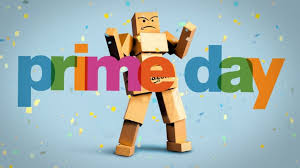With the news that Amazon will acquire Wholefoods for $13.7 billion, industry pundits are weighing in on why the eCommerce giant would buy a chain of grocery stores. The theories are wide ranging:
- Broader omni-channel presence. Some say that the over 400 Whole Foods store locations could become a place to pick up Amazon orders of any kind.
- Better logistics, especially for the cold chain. Whole Foods is trusted to deliver fresh, organic food, which requires being able to master the “cold chain” and del with products that can spoil.
- Dominance of a new retail segment – grocery. Amazon blew away retail eCommerce, leaving a graveyard of competitors behind. Now it is time to focus on another segment.
- Synergy with other Amazon initiatives like Pantry, Go, Fresh, and Now. Amazon has forayed into groceries with Fresh and can now leverage the Whole Foods supply chain. Pantry items are similar to grocery, and Whole Foods stores could become part of the Go or Now experiences. The synergies go on and on.
- Competition with Walmart and Target. Walmart has the largest U.S. market share in the grocery segment and Target has been building grocery capabilities into many of its stores. To compete, Amazon needed more than grocery delivery.
Which theory is correct? All of them – Amazon is all about growth and innovation. The Whole Foods acquisition will allow Amazon to use the 400+ stores as distribution hubs, to enter the grocery market more efficiently, to give Prime customers more value, and to keep on innovating and coming up with new ways to provide great customer experiences.
Amazon is a force to be reckoned with and it does not matter what retail segment you are in – Amazon is coming for you.
That is why it’s surprising that Moody's retail analyst Charles O'Shea would comment that it is too soon for Walmart and other large grocers to be worried that Amazon is entering the grocery sector. I wonder if Mr. O’Shea actually remembers what happened to the retail eCommerce players that Amazon left in its wake?
In reality, retailers of all kinds need to respond now. Recent forays into fashion should be a wakeup call to fashion retailers. Grocers should now be sleeping with one eye open. The best defense for these retailers in Amazon’s sights? Fight fire with fire. Make sure your product selection is right for your customers’ expectations. Get your cost structure in order so you can compete on price. Make the customer experience compelling so that loyal shoppers stay with you.
As evidenced by grocers like Carrefour and Tesco, the golden ticket is increasing the share of wallet you have with customers by broadening your assortment without increasing inventory or logistics costs. To do this, both companies launched a marketplace where trusted third-party sellers offer products alongside Tesco’s and Carrefour’s own. This provides these grocers with profitable revenue growth and allows them to quickly meet the needs of the weekly grocery shopper (either for groceries or complementary items) so that customers remain loyal and spend more.
Find out why Forrester says retailers should seize the marketplace opportunity now.

Written by Barry Murphy
Barry Murphy is the Director of Content and Product Marketing at Mirakl. In this role, Barry leads the alignment of Mirakl's offerings to market needs for the next generation of online commerce. Barry previously ran product marketing organizations for X1 and Mimosa Systems (now part of HPE). Barry also had a highly successful stint as Principal Analyst at Forrester Research. Barry received a B.S. from the State University of New York at Binghamton and an M.B.A from the University of Notre Dame.


